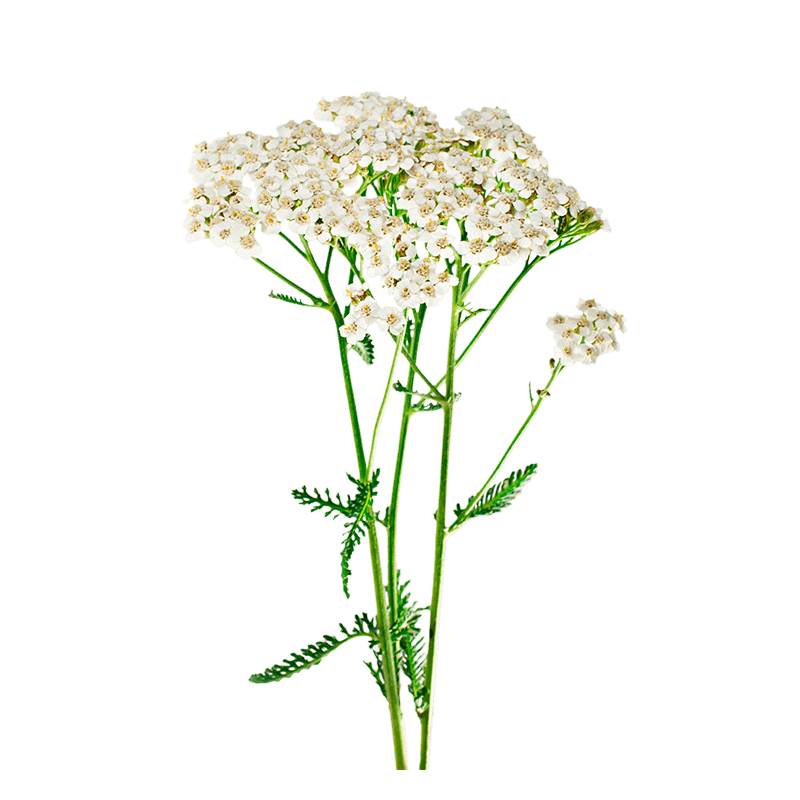Latin name
Achillea millefolium L.
Origin
A cosmopolitan species in the Northern hemisphere. It is found in Eurasia and North America.
Used part
The flowering aerial parts.
Active components
Essential oil (chamazulene): antiseptic and calming on the digestive tract, with antioxidant and anti-inflammatory effects. Flavonoids (luteolin, apigenin, quercetin): antioxidants that also have an antispasmodic effect. Bitter principles (sesquiterpene lactones): responsible for appetite stimulation and the proper function of the digestive system. Tannins: astringent and antiseptic. Phenolic acids (cynarine): choleretic. Alkamides: anti-inflammatory effect.
Usage
Other than the fact that there are numerous varieties of yarrow specially cultivated for decoration, this plant was traditionally valued for its health virtues. One of the oldest uses is to stimulate wound healing and its styptic properties, but also to promote digestion and sleep. Yarrow has also been used to relieve menstrual symptoms and periodic abdominal cramps. In the Middle Ages, this plant was used as an ingredient in beer, before the use of hops became common practice. In German-speaking countries, there is still the tradition of preparing “Gründonnerstag-suppe” in the week up to Easter. This soup, prepared using Spring herbs, including yarrow, has a cleansing effect and can combat Spring fatigue. Scientific research into yarrow shows its efficacy for digestive disorders such as cramps, loss of appetite and difficult digestion. 1-9 Traditional use to promote digestive comfort has been scientifically documented. 10-13

